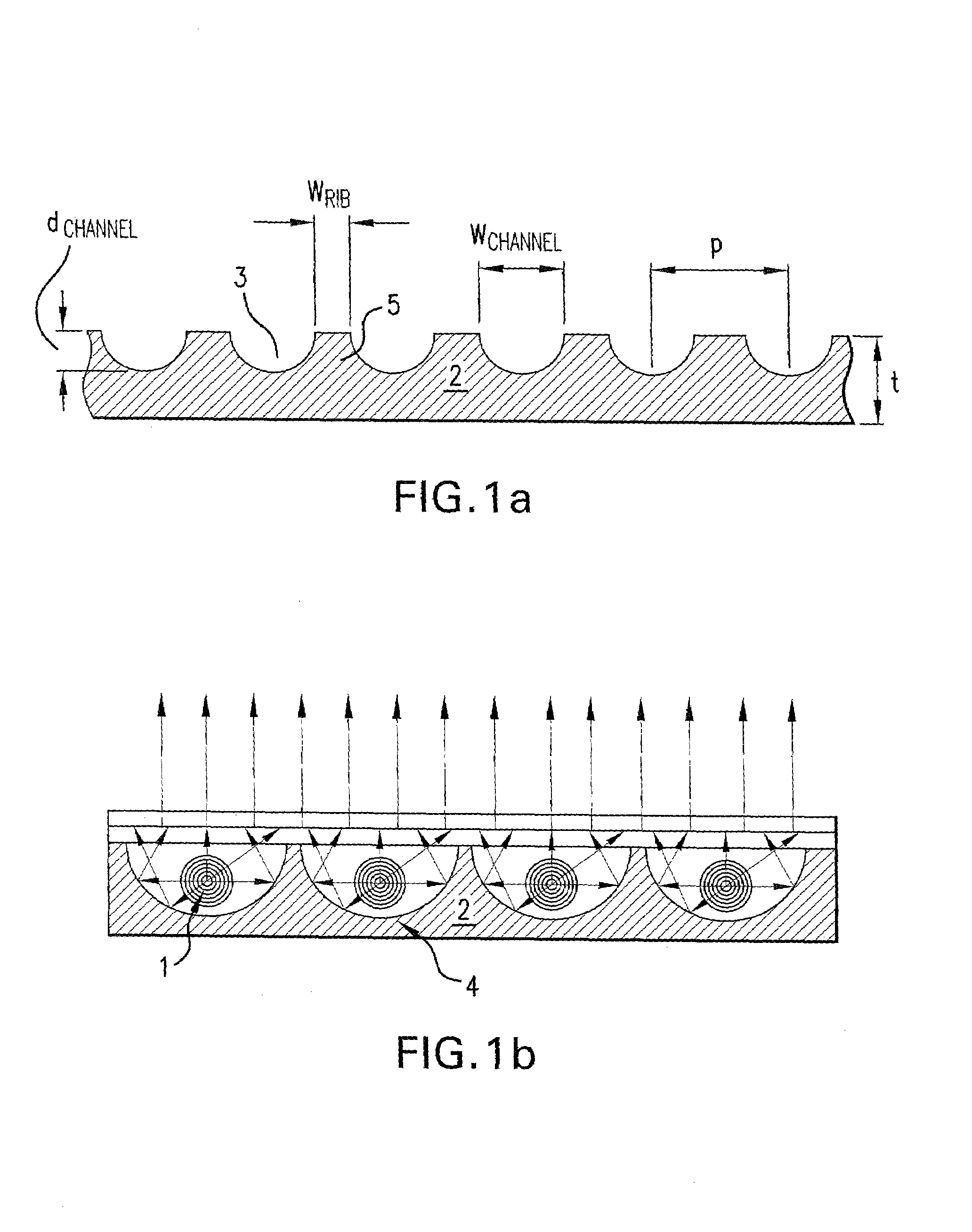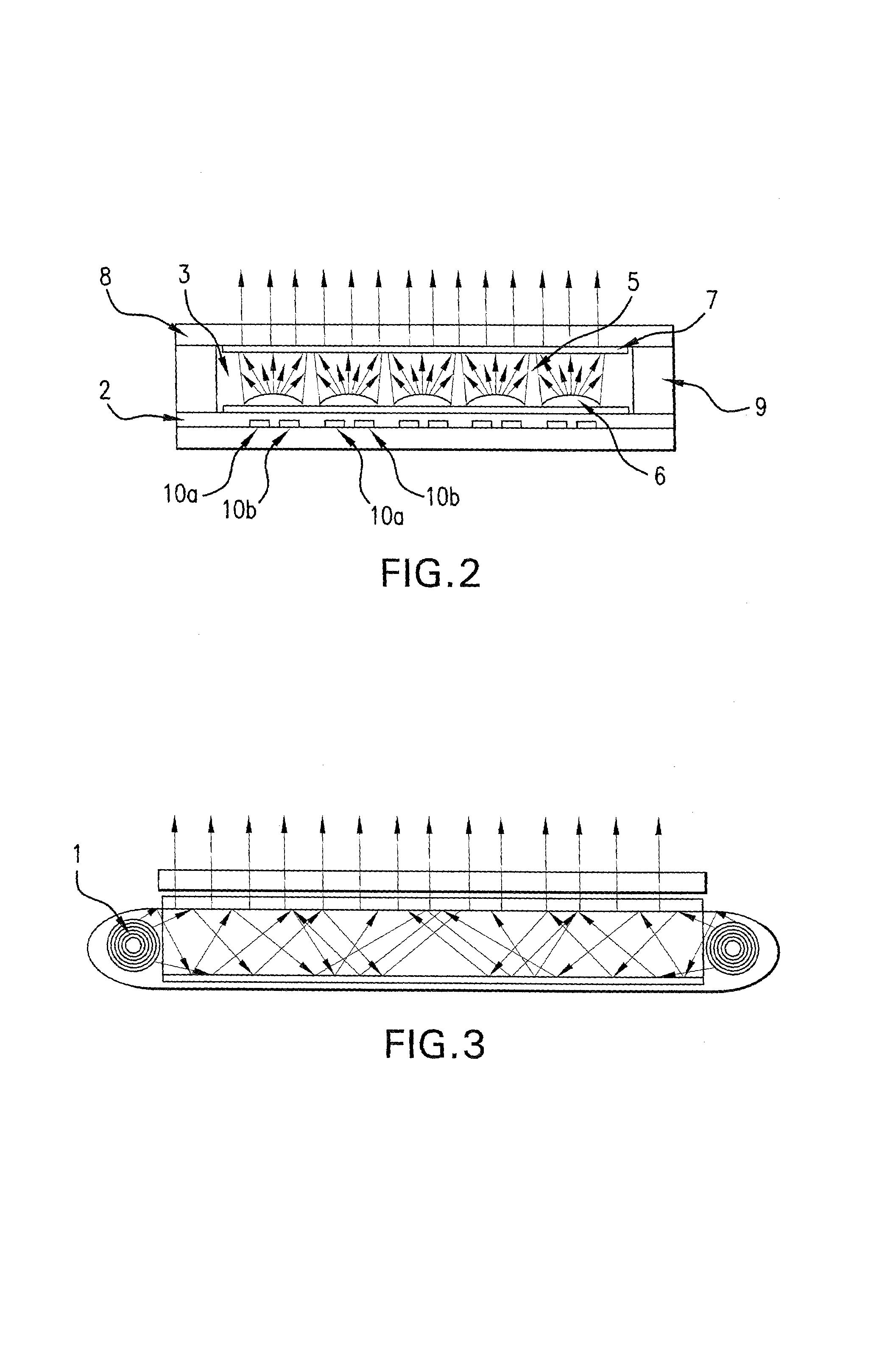UV-radiation absorbing glass with high chemical resistance, especially for a fluorescent lamp, and methods of making and using same
a technology of uv-radiation absorption glass and fluorescent lamps, which is applied in the field of borosilicate glass, can solve the problems of large fraction of uv light, damage to neighboring components, unusable entire products, and inability to use them, and achieves stable hydrolytic resistance and high transmission
- Summary
- Abstract
- Description
- Claims
- Application Information
AI Technical Summary
Benefits of technology
Problems solved by technology
Method used
Image
Examples
examples
[0063]The glass according to the invention was made with standard techniques and compared with glasses of the prior art. The raw materials were melted in a quartz glass vessel at a temperature of 1620° C. and refined. The absorption and / or transmission of the resulting glasses were measured.
[0064]The compositions of the individual glasses tabulated in the following table I, table II and table III are for comparison glasses V1 and V2 (table I) and glasses A1 to A15 of the invention. The glass according to the invention (tables II and III) not only has the desired hydrolytic resistance, but also outstanding UV absorption and a high transmission in the visible range.
[0065]
TABLE IGLASS COMPOSITIONS OF THE PRIOR ARTOxide Ingredients / PropertiesV1V2SiO268.4568.70B2O319.009.90Al2O32.556.28Li2O0.802.19Na2O0.803.14K2O7.701.19MgO2.00CaO1.00SrOZnO0.60ZrO2As2O30.10TiO2—4.00CeO2—0.80NaCl0.8NO3Total100.00100.00ALPHA × 106 in K−14.70TG, ° C.485.00VASeal Ex. Glass / glassin 8250 StandardSeal Ex. Glass...
PUM
| Property | Measurement | Unit |
|---|---|---|
| thickness | aaaaa | aaaaa |
| thickness | aaaaa | aaaaa |
| wavelength range | aaaaa | aaaaa |
Abstract
Description
Claims
Application Information
 Login to View More
Login to View More - R&D
- Intellectual Property
- Life Sciences
- Materials
- Tech Scout
- Unparalleled Data Quality
- Higher Quality Content
- 60% Fewer Hallucinations
Browse by: Latest US Patents, China's latest patents, Technical Efficacy Thesaurus, Application Domain, Technology Topic, Popular Technical Reports.
© 2025 PatSnap. All rights reserved.Legal|Privacy policy|Modern Slavery Act Transparency Statement|Sitemap|About US| Contact US: help@patsnap.com


